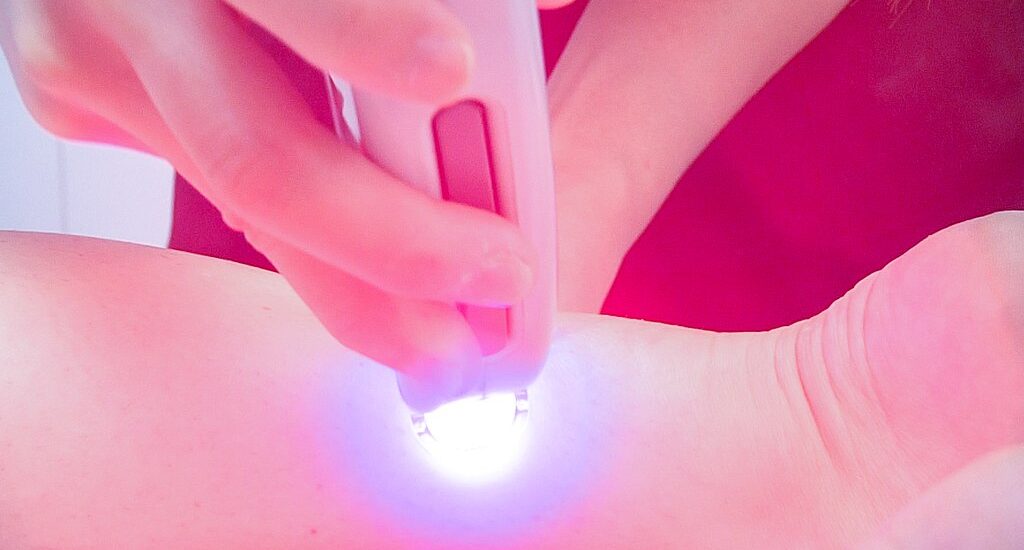If you’ve noticed lumps under skin after laser hair removal, it’s natural to feel concerned. This comprehensive article is designed to guide you through the whys, the whats, and the hows of managing these lumps effectively.

Table of Contents
Why Do Lumps Appear After Laser Hair Removal?
Lumps under the skin may occur after a laser hair removal treatment for various reasons. Here is a breakdown of the most common causes:
Inflammation: The laser generates heat to destroy hair follicles. This heat can cause localized inflammation, leading to lumps. Inflammation is usually the body’s way of responding to injury or irritation, and it typically resolves on its own after a few days.
Skin Irritation: The laser’s heat might also irritate the outer layer of the skin, causing it to form temporary lumps. If you have sensitive skin, you may be more prone to this side effect.
Hair Follicle Reaction: In some cases, the hair follicles may respond to the sudden heat by swelling up, leading to visible or palpable lumps. This is essentially a localized reaction where the body tries to repair the treated area.
While these lumps often disappear on their own, it’s essential to monitor them and seek medical advice if they persist or worsen.
Common Symptoms Associated With Lumps Under Skin After Laser Hair Removal
When lumps appear after laser hair removal, they might be accompanied by other symptoms. Recognizing these can help you decide your next steps:
Redness: The affected area may look red, indicating increased blood flow as a part of the body’s natural healing response. If the redness doesn’t go away after a couple of days, consult a healthcare provider.
Itchiness: Itching can occur either on the lump itself or the surrounding skin. This is often due to skin irritation or inflammation.
Discomfort or Pain: You may experience a mild to moderate ache around the lump, especially when you touch it. This discomfort is usually temporary but should be monitored for any escalation.
These symptoms usually subside on their own but need attention if they persist or worsen.
Home Remedies for Managing Lumps Under Skin After Laser Hair Removal
If the lumps and accompanying symptoms are mild, you may try the following home remedies for relief:
Cold Compress: A cold compress can constrict blood vessels, reducing inflammation. To do this, wrap ice cubes in a cloth and hold it against the lump for 15-20 minutes. Never apply ice directly to the skin.
Hydrocortisone Cream: Available over-the-counter, hydrocortisone cream can alleviate itchiness and reduce inflammation. Apply a thin layer over the affected area but never use it for extended periods without consulting a healthcare provider.
You can get this Equate Hydrocortisone Intense Healing Cream from Walmart.
Aloe Vera Gel: Aloe vera has natural anti-inflammatory and soothing properties. Applying pure aloe vera gel to the lump can reduce discomfort. However, make sure to patch-test a small area first to rule out any allergic reactions.
It’s crucial to note that while these remedies can provide temporary relief, they are not a substitute for professional medical advice. If symptoms persist, consult a healthcare provider.
Check out these other articles…
Dry Skin After Laser Hair Removal: Comprehensive 411 Guide
Skin Discoloration After Laser Hair Removal: Ultimate Guide
Exfoliate Skin After Laser Hair Removal: Comprehensive Guide
Itchy Skin After Laser Hair Removal: 3 Causes & Remedies
My Skin Burns After Laser Hair Removal: 3 Causes & Remedies
Red Skin After Laser Hair Removal: Comprehensive 411 Guide
Is Skin Smooth After Laser Hair Removal? The Ultimate Answer
When to Seek Professional Help
If the lumps under your skin after laser hair removal:
Persist for more than a few days
Are increasingly painful
Show signs of infection like pus or extreme redness
It’s crucial to consult a healthcare provider for a thorough examination and appropriate treatment. Delaying medical intervention can exacerbate the condition and possibly lead to complications.


